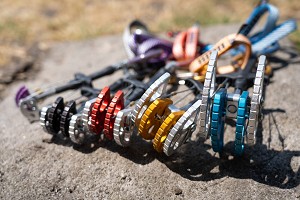
Camming devices, Friends, Cams, whatever you want to call them, they are amongst the most prized possessions of all trad climbers. If you're lucky enough to own a spangly set of top-of-the-range cams, then you can bet your bottom dollar that your mates are always keen to climb on your rack.
For this test we got as many different cams as we could. There are more out there that we haven't covered, but we tried to get our chalky paws on as many as possible.
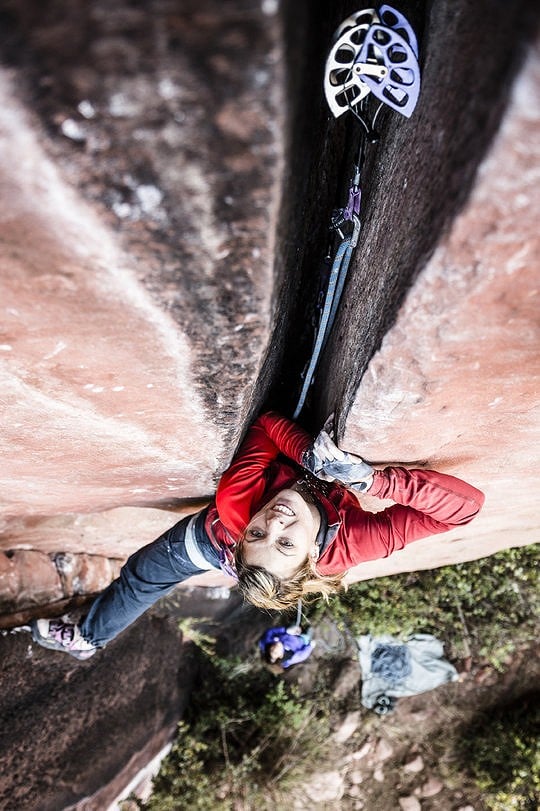
What is clear from this review is that climbers have an amazing choice of gear these days and the range of cams out there is astonishing.
There are 2 'Best in Test' winners in this review - one for normal sized cams and one for smaller cams. Read on to find out who we thought were the best overall.
Note on prices: We've tried to give the RRP for the different models of cam, however usually as the cams get larger, the price increases - so we've opted for a mid-size price for each model. Also, there are some very good deals around, so don't be surprised if you can occasionally find them cheaper than the price quoted here.
Normal/Large Size Cams
Black Diamond Camalots C4s £64.99 approx (depending on size)
The Black Diamond Camalots are world famous and one of the most popular pieces of climbing hardware ever to be manufactured. The original design (just called Camalots) has been tweaked to give the modern C4s; robust, chunky camming units that have done the business on countless routes.
They are a dual axle design, giving a greater 'range', meaning that when you squeeze the trigger the cams actually cover a greater spread of sizes, which on the crag means that each cam will fit in a wider range of sizes of crack.
The camming angle of the BD Camalots is a little higher than most of the other cams in this review. The seemingly 'standard' camming angle is 13.75, whereas the Camalots use a 14.5 camming angle. This means you get even more range out of the BD Camalots than the other dual axle cam on test - the DMM Dragons - but it also means that at both ends of the placement size spectrum (having your Camalots tipped-out and over-cammed) you get marginally less camming force, and the placements are slightly less strong.
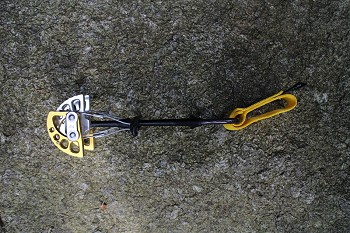
The four camming lobes (that's why these are called C4s - BD also make C3s, smaller cams with only 3 lobes, not tested in this review) are made from 7075 aluminium which is a little harder than the most common aluminium for cam lobes. This means there is slightly less friction on the placements, but your cams will last longer and not get mangled up through repeated use. The lobes are wider than the Dragons, meaning more surface contact with the rock, but also making the Camalots a bit heavier.
In fact this toughness is one of the best features of the BD Camalots. They are the most robust cam in this review, and the tough nylon sling also lasts better than most of the other cams tested. It's not an extendable sling though, so you do lose that extra bit of length that you would get with say a DMM Dragon or an Alien.
On the crag:
We found the Camalots a joy to use. They didn't get stuck easily even when over-cammed, they didn't tend to walk much, and they were easy to plug in and remove. Sometimes you can look at the tech specs all you like, but the simple fact of the matter is that when you pick up and use a Black Diamond Camalot, you realise they have got something 'just right'.
Extra notes:
Black Diamond are releasing a super-light version of the Camalots in the near future - these units will be less robust but significantly lighter. We can't wait to check them out.
Also BD have historically manufactured the Camalots in the US, but shipped them to China for assembly and other processes such as anodising. They are now in the process of moving all of their manufacturing back to the US.
Summary:
Absolutely brilliant, tough cams that work amazingly well. We love them and they are one of our 'go to' pieces of gear. The Dual Axle design and high camming angle gives a wide placement range, the simple design is tried and tested and super durable.
Strength: 8kn - 14kn depending on size
Weight: 75g (smallest) - 201g (large blue size 3) - 557g (giant size 6!)
More info: Black Diamond Website
DMM Dragon Cams £64.99 approx (depending on size)
The Americans all go for Camalots, but us Brits, we prefer Dragons - right!? That's the word on the crag, but is it actually the case, and are the Dragons different/better/worse than their American cousins?
The superb DMM Dragon Cams are in the eyes of many the UK version of the Camalots and it is fair to say that they have many similarities. DMM opted to colour-code their Dragon Cams to match the Camalots, which has helped keep colours and sizing standard, and not confuse climbers who are mixing and matching their racks, but aside from the obvious similar colours and dual axle design, what are the differences between the Camalots and the DMM Dragons?
The Dragons don't have a thumb loop, but are lighter than Camalots. The Dragons have an 8mm dyneema doubled sling meaning you don't always need a quickdraw to extend them, but they have slightly smaller camming range than a Camalot due to a different camming angle. This 13.75 camming angle means that Dragons have more holding power at the extremes of their range. Camalots are made from a slightly tougher aluminium than Dragons (Dragons are made from 6082) but this means the aluminium of the Dragons should bite more in to the rock.
With the exception of the doubled sling and thumbloop differences, all of these minor differences we have looked at are just that: minor. On the crag it is really hard to tell the difference.
So what we are looking at is a superbly designed dual axle camming device in a full range of sizes from 00 (blue) to 6 (silver). It would be great if DMM could find time to make a really big cam for offwidths (please!).
Dragons have an eyelet on the end of the single stem which holds the doubled sling. This sling gives you the option of having the cam quite short (ideal for straight up cracks amnd racking on your harness) but also you can pull one side of the sling to extend it, meaning that often you don't need a quickdraw to stop rope drag.
The (slightly narrower than Camalots) lobes are hot forged meaning that they are stamped out of a sheet of metal, instead of being cut from a long extruded billet of metal. This stamping means that the lobes can be a complex shape and design, which essentially means that metal can be moved around very efficiently by DMM in this hot forging process (a process in which DMM are considered experts across the climbing industry), and this means that the DMM Dragon Cam lobes are extremely lightweight, and this is noticable.
The length of the flexible stem of the Dragons is also quite short, and then it turns to a dyneema sling. What we found is that this means the Dragons are less prone to walking than some other cam designs due to the shorter 'lever' of the stem on the head. This did mean that in certain moments of extreme reachiness, you can actually push a thumb-looped cam like a Camalot higher above your head than a Dragon though! Although this is of course a very rare occurance. Overall we liked the less 'walky' nature of the Dragons more than having 15mm of extra reach.
On the crag:
We found DMM Dragon Cams to be ace, really, really ace. We loved them. We found that an extended Dragon cam gets in the way of your foot slightly less than a BD Camalot with a quickdraw on (placed in a splitter crack at waist height, often a sticking point for a climber is getting your foot jams past your gear. A good crack climber will place gear below his hand jams, but you can't often place cams below your feet!). The neat and slim dyneema extension on the Dragon was easier to just flick to one side with your toes and left room for a foot to get in to the crack. Speaking of the extendable sling, we loved it, using it in place of a QD (or to make a QD even longer) on many UK trad routes and the lightweight design of the cams really hits home when you are carrying a double set on a crag like Gogarth.
VIDEO:
We really liked this fun little video of Chrissi Igel attempting to onsight the classic 7b roof crack of Legoland in Orco, Italy. No editing - just actual real climbing. You can see the Dragons in action.
Extra notes:
The Dragon Cams have been tweaked for 2016 with slightly wider cam lobes for more surface area against the rock, and the anodising has been machined off the contact faces of the lobes for more grip. A neater sling has been added to the clipping end too - all good additions - see the video below. We'll have to see if the wider lobes weigh much more than the current narrower ones. The machining of the contact faces looks like a good idea, but if you want to replicate that on your current cams we found a few gritstone jamming cracks soon takes the shine off them!
Summary:
Absolutely ace cams and designed with UK trad in mind. Give us a double set of these babies and we'll give you a day out on Gogarth! Not quite as 'plug and go' for American style splitters, but more extendable for the wandering nature of UK trad. Brilliant bits of kit.
Strength: 9kn - 14kn depending on size - passive strength is the same.
Weight: 75g (smallest) 195g (big Blue)
More info: DMM Website
DMM Demon Cams £45 approx
The DMM Demon Cams are essentially the head of a DMM 4CU and the stem and sling of a Dragon Cam. All of the above points about the usability and usefullness of the double sling are all applicable here.
The single axle design of the Demon Cams might appeal to certain climbers more used to a rack of older cams (or 'Friends') and who don't want to switch to the double axle design. The colouring and sizing are different on the double axle cams and after decades of climbing that can be troublesome! Also they are cheaper than the double axle design cams available.
One thing that we don't like about these (and other single stem designs such as the Wild Country Heliums etc), is that if you really pull the trigger and overcam the cams, you can actually pull them so far as to place the contact faces of the lobes against the rock, but backwards - think ultimately over-cammed! This is very difficult to remove. It isn't a problem on double axle design cams, where the back of the cam lobes go almost flat.
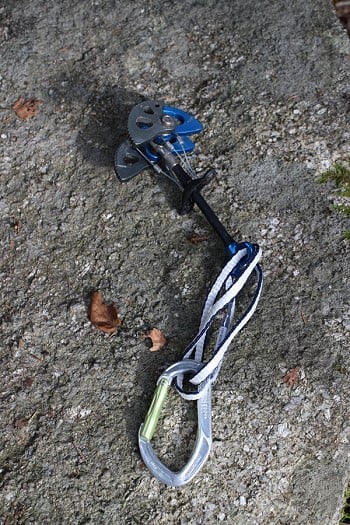
On the crag:
They worked well on the crag, went in where they should and stayed put. They felt tough and durable and had a good feel to them, however we noticed the lack of expansion range, especially in the larger sizes.
Summary:
Good, solid, single axle cams with a useful double sling design. For those looking for a cheaper cam, or a more modern single axle cam, these are a good choice. As with many single axle designs, they feel a little 'old-school'.
Strength: 14kn (all sizes) 10kn (placed passively)
Weight: size 0 = 84g / size 4 = 221g
More info: DMM Website
DMM 4CUs £45 approx
The original DMM cams - the 4CUs have been around for a long time, and still work well. A good, solid camming unit with a double stem and a single axle, these 6082 aluminium lobed cams have been the staple of many a UK climber's rack for the last couple of decades. They were once the main rival to the Wild Country Tech Friends (no longer in manufacture) and come in the standard single axle / Friend sizing, which is different to the Dragon Cams and the BD Camalots.
As with the Demon Cam, the 4CUs come with 'cam stops' on the lobes - essentially flat steps of metal that touch each other - which means they can be placed passively (like a nut) and are rated to 10kn in this way.
The double wire stem has been said to be stiffer than a single stem, meaning more walking of the head, however we found this to not really be the case to any noticable level. The one thing we did notice is that if you take a big whipper or even sit on the cam and end up kinking the two stems, then pulling back the trigger can be a bit tricky afterwards. The stems are thinner (there are two of them of course) than on a single stem cam, so they do kink a little more easily.
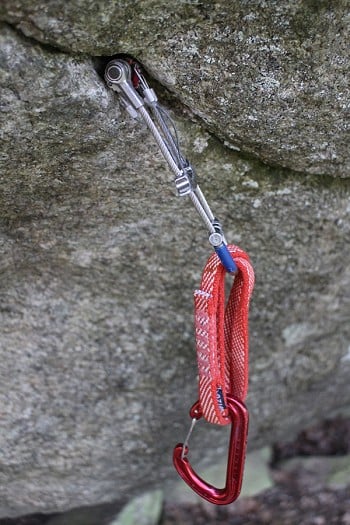
The sling on the 4CUs is the signature dyneema doubled sling as on all the other DMM cams. The strength of these cams is either 12kn or 14kn depending on whether you clip a single strand of the sling or the doubled sling. (As mentioned above, they are rated to 10kn passively).
The 4CUs are actually available in 11 different sizes, the same as the Demons above in the full and half sizes, but also with a 1.25 and a 1.75 size squeezed in too. If you have a specific route in mind with a very specific slot size - this could save your bacon, but for normal usage, we found the full and half sizes to be fine.
On the crag:
These performed pretty much as the Demons except it's worth noting that these 4CUs are a little lighter than the Demon Cams, but actually size for size are not as light as the Dragon Cams...interesting.
Extra note:
It's worth knowing that DMM still have 3CUs available. These are very similar to the 4CUs but have only 3 camming lobes, meaning the head is narrower and can fit in more pocket like features. Although we didn't get any of these specialist cams for use in this test, we have a size 0 and a size 0.5 on one of our racks and they are nice little bits of kit.
Summary:
Great cams at a reasonable price, pretty light, and in a wide range of sizes. If we were opting for a new set of single axle cams, these would be our choice. We might even chuck in a couple of the 3CUs too. They do feel a little old-school in comparison to the double axle cams out there, but for many climbers who have grown up with single axle, these are a good option.
Strength: 14kn / 12kn (all sizes) 10kn (placed passively)
Weight: size 0 = 75g / size 4 = 224g
More info: DMM Website
Wild Country Helium Friends £40 approx
Around four years ago Wild Country scrapped their iconic Tech Friends and brought out the all new Helium Friends. Available in 9 sizes from 0 to 4, they are a single stem, single axle cam with a thumb loop and a 12mm extendable dyneema sling. All the cams are rated to 12kn in normal use and between 10 and 12kn in passive mode (the Helium Cams have 'cam stops' meaning they can be placed like a nut).
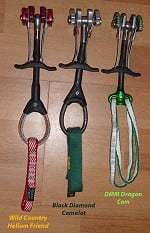
In use this means that the longer, slightly heavier and stiffer stems are a little more prone to walking in cracks, especially in the smaller sizes. The longer stem does mean that you have that little bit of extra reach of course.
The lobes are hot forged and very light weight, and overall the product is well put together.
Extra note: Wild Country still make their very large Friend 5s and 6s in the old style - these are brilliant for offwidths and many manufacturers just don't make cams that big anymore. Thank you to Wild Country for meeting the wider climber's needs!
Also, perhaps even more exciting than the current Helium Friends is THE NEW FRIEND! Coming out in 2016 these are set to replace the Helium Friends anyway, so this review might be out of date in 12 months time. Here's a video of UKC getting a preview of the new Friends at the OutDoor Show this year - check them out - and we are looking forward to testing these in the flesh...
Summary:
Medium weight single axle cams. Hot forged lobes and a range of 9 sizes. A bit 'walky' with long stems. Overall decent cams, but they do seem a little old-school when compared to some of the double axle designs. Set to be replaced next year by some very sexy looking new Friends. Seem to be available online at very good prices right now.
Strength: 12kn / 10/12kn (passive)
Weight: size 0 = 87g / size 4 = 221g
More info: Wild Country Website
Totem - Totem Cams £65-68
Well, these cams are the most unique in the review, and by a long way. If you're not at all familiar with these Totem Cams, we suggest reading UKC's Full Review of the cams before you look at this brief version here.
The Totem Cams are a remarkable design and they work slightly differently from all other cams on the market in that they load the two different sides of the cam individually and also that the load goes straight on to the lobes, not via an axle. This genius design means they have stronger holding power than normal cams - read the tech stuff in the review linked above to get a better understanding.
The 5 available sizes go from Blue to Red (Dragon/Camalot sizing and colours) with the Red being rated to 13kn and the Blue to 8kn. Looking at the ratings, it is worth checking this nice little video from Totem on how strong their cams are in the test lab:
They have a fantastic range, even though they aren't double axle, which is again down to this unique design. We found the range to be very similar to the Black Diamond Camalots.
The aluminium lobes are quite basic in design (no DMM style hot forging here) but even though they are 7075 aluminium, we still found them to seem quite soft metal and bite extremely well when placed. The wide sling system takes a bit of getting used to, and the plastic thumb rest has started to show signs of wear on our more used sizes.
On the crag:
On the face of it these sound like by far the best cams on the market. They have super narrow heads, a unique design and more holding power - what's not to like?! Well we did like them, and for certain placements they are the clear winner.
However for a full set of cams they simply aren't available in enough sizes. Yellow cams are perfect hand size for many people, and there isn't a Totem available in this size, or the size up - so perfect hand jamming cracks and cupped hands are both out! Bummer!
Also, we did find the wide sling system a bit of a fiddle on the harness, and they take up a lot of racking room. This is especially noticeable when you want to carry a double set of cams.
Busted: Yep, the Totem Cam is the only one in the test so far that we've managed to bust. No it didn't fall apart, but these Totem Cams can't be placed passively (like a nut), the cams must be engaged for the unit to work. We took a fall on one of ours (more precisely Rob Greenwood took the fall) and the Totem must have moved to a pocket in the crack where the cams were not big enough to engage. The fall then pulled the unit downwards, and this pulled the cams upward - like an umbrella being pulled inside out by the wind, resulting in the cam being damaged.
Summary:
Brilliant, if somewhat specialist cams. Excellent choice for those wanting to do an aid route up El Cap, or for those needing to protect some esoteric desperate route on flared slots. A unique design that has clearly advanced the Cam market. Worth a look, but unfortunately not available in a full size range and quite wide at the racking end on your harness. Get a Green and Purple as your second cams, and you won't go wrong! Remember they can't be placed passively.
Strength: 8kn - 13kn depending on size
Weight: 75g smallest - 132g (red)
More info: Totem Website
Overall Summary - Large Cams
|
Model |
Price | Weight | Strength | Rating | Summary |
|
Black Diamond Camalots C4s |
£64.99 | 75g (smallest) | 8kn - 14kn |
Brilliant, tough cams that work amazingly well. Dual Axle design and high camming angle gives a wide placement range, the simple design is tried and tested. |
|
|
DMM Dragon Cams |
£64.99 | 75g (smallest) | 9kn - 14kn | |
Best in Test winners for larger cams. Absolutely ace cams and designed with UK trad in mind. Not quite as 'plug and go' for American style splitters, but more extendable for the wandering nature of UK trad. |
|
DMM Demon Cams |
£45 | 84g (smallest) | 14kn |
Good, solid, single axle cams with a useful double sling design. As with many single axle designs, they feel a little 'old-school'. |
|
|
DMM 4CUs |
£45 | 75g (smallest) | 14kn |
Great cams at a reasonable price, pretty light, and in a wide range of sizes. They do feel a little old-school in comparison to the double axle cams out there. |
|
|
Wild Country Helium Friends |
£40 |
87g (smallest) |
12kn |
Medium weight single axle cams. A bit 'walky' with long stems. Overall decent cams, but they do seem a little old-school when compared to some of the double axle designs. |
|
|
Totem - Totem Cams |
£65 |
75g (smallest) |
8kn - 13kn |
Brilliant, if somewhat specialist cams. A unique design that has clearly advanced the Cam market. Worth a look, but remember they can't be placed passively. |
Small/Micro Cams
Black Diamond Camalots X4s £70 approx (depending on size)
These sexy little things are a smaller, narrower headed, lighter Cam from Black Diamond. They're both a single axle design in the 3 smaller sizes and a dual axle design in the three larger sizes. The lobes are the same 7075 aluminium that is on the Camalots.
We mentioned the Camalot C3s briefly above (they are narrow headed cams with only 3 lobes), well the Camalot X4 has a similar single-stem flexibility and narrow head-width but with 4 lobes (think 'Aliens' in style). Where the Camalot X4s differ from Aliens though is in the expansion range in both the larger sizes - they feature a dual axle (like Camalot C4s), and the smaller sizes - they have a 'Stacked Axle' that BD say "provides the smaller sizes with double-axle expansion range without enlarging the head width."
We totally agree that the larger X4s have more expansion range - they are after all dual axle, but when it came down to this 'stacked axle' concept, we couldn't really notice much of a difference between the range on the small X4s and the range on similar sized Aliens etc. The stacked axle, is (as far as we can understand it!) an oval axle design, which means that as the lobes move on the axle they expand outwards more due to the oval shape - sounds good, certainly not a bad idea, but didn't do a whole lot in practice. Maybe it adds a milimetre or two, we can't be sure.
Anyway, a feature that we really, really liked was the 'armored cable', which is the metal rings that surround the flexible stem. The rings keep the stems flexibilty, but help stop wear and tear - these X4s are again hardwearing bits of kit and the metal rings are more robust than a sling-style cover found on other camming units.
The whole product is extremely neat with sexy little tweaks like integrated cam springs (the little springs that are usually next to the cam lobes) are actually housed inside the cam lobes in machined out slots; symmetric swage (the stem comes out of the very centre of the thumb loop instead of being slightly offset) and a very light-weight hot-forged trigger bar - nice!
On the crag:
They work, they really do. We say that the double axle ones (like the grey .4) are our favourite small cams - offering reduced head width and a super flexible stem, the added range of the dual axle and a really durable design. We also like the smaller single axle ones - they were on a par in terms of usability to the other micro cams we've used, and just had the edge in terms of durability. Maybe they aren't quite as grippy due to the hard wearing 7075 aluminum, but for 99% of placements, we didn't notice - as a discerning climber, you've got the choice - hard wearing (and well made) or softer and more grippy.
Extra note:
These beautiful bits of kit are also available in an offset design (bigger lobes on one side than the other). Whilst we aren't massive offset cam fans, some people like them, so it's good to know you can get them if you want - for pin scars etc.
Summary:
Brilliant, tough, small cams. The larger sizes are dual axle which is a great feature at this size as smaller cams have smaller ranges, so any extra range at this size is really handy. We loved them.
Strength: 5kn - 9kn depending on size
Weight: 51g (smallest) 112g (largest)
More info: Black Diamond Website
Totem - Basic Cams £58
This small cams look and feel very similar to Aliens. They are available in only 4 sizes, green through to red (slightly smaller than a blue Dragon/Camalot through to Purple Dragon/Camalot size), and are made from a soft alloy (6061) which bites really well in to the rock, but perhaps doesn't last as long with repeated use as a harder alloy.
We really liked these basics, as the guys at Totem have essentially taken the original Alien design and improved it, making the springs internal in the lobes (the same as the Black Diamond C4s) .
The Basics have a metal trigger (tougher than plastic) and a nice fabric cover over the stem. This is really flexible, and helps keep the cam in place, but is less hard wearing than the BD X4 equivalent. The cams are pulled by metal wires, not thin cord. Many of the other micro cams use a thin cord. We haven't had any wear issues on either type of fixing as of yet.
Extra note: You can read a full individual review of the Totem Basic Cams here on UKC.
Summary:
Excellent single axle micro cams with soft metal lobes that are dead grippy. A newer, fresher version of the old Aliens. Really top notch micro cams.
Strength: 5 - 11kn depending on size
Weight: smallest = 56g / biggest = 72g
More info: Totem Website
Metolius Master Cam £54.99
The Metolius Master Cams are small single stem cams with 8 different sizes ranging from 2 sizes below the smallest Camalot/Dragon up to a size in between the Green and the Red Dragon/Camalot. They are similar in size and breadth of range to the Black Diamond X4s.
The single axle design added to the small sling and the extra weight saving tweaks such as the nylon lobe cables means that these are pretty lightweight units.
They feel well sprung, with a good confidence boosting action. The range on the cams is one of the lowest on test with a camming angle of only 13.25, but this does mean an increased force, so these cams should hold where a similar cam with a higher camming angle might rip. In practice we didn't really notice the difference between the grip so much, but then it is hard to tell when you're lobbing off on to small cams!
The lobes are basic looking, but in the larger sizes have a coloured indicator helping you to decide if your placement is well chosen - not something we thought was that useful in practice.
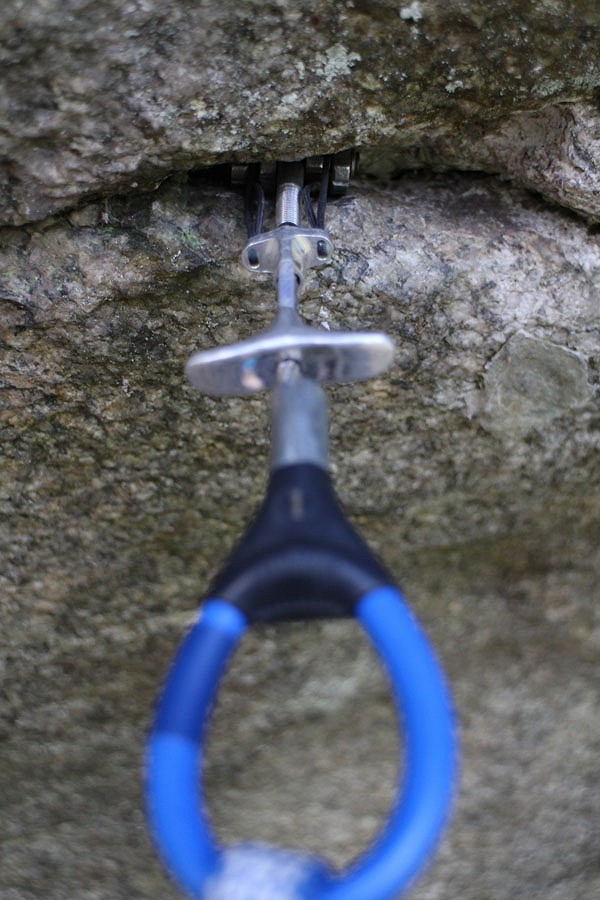
The cams are colour-coded, but unfortunately this coding doesn't match up with other brands, so if you do mix and match your cam brands you will have to get used to your own rack - not impossible, in fact we've had a couple of the smaller Master Cams on one of our racks for years and they are still going strong.
We found they do need a little more attention that other cams in that they need to be lubed more often to keep the action nice and smooth.
Whilst in a much earlier UKC review Jon Griffith found some fraying on his nylon cam cables, we have not had any issues during the 6 months of this test, or with the cams we've had on our racks for the last 6 years. It's interesting to note that Black Diamond have opted to go for the same nylon cables on their X4s. The nylon cord is stronger, lighter and more flexible than wire.
On the crag:
Once we got used to the sizing, we found these handy little cams went in well, and we certainly reached for them in the smaller sizes. In the larger sizes they were easy to use, and we had no complaints, and the narrow heads were also useful.
Extra note: Although we didn't get any to test, Metolius do make a range of other cams, some of which look super funky like the 'Supercam'! Check them out on the Metolius Website.
Summary:
We actually liked these Metolius cams a lot, mainly in the smaller sizes. They are well made, work well and seem bombproof. The larger sizes might have been eclipsed by the dual axle available on the X4s, or for those wanting maximum holding power, perhaps by the Totem Cams. These sit somewhere in between, with a seemingly softer metal than the 7075 of the X4s and a stronger camming angle, but harder metal and not as grippy as the Totem Basics, these are perhaps something for those wanting a no nonsense single axle small camming unit.
Strength: 5kn - 10kn depending on size
Weight: 62g - 110g
More info: Metolius Website
Fixe Aliens £50
Aliens are very famous bits of kit in the trad climbing world. From the shot holes on Millstone's Master's Edge, to many micro cracks the world over, these narrow-headed camming units have been spoken of in hushed tones by anyone who has ever taken a whipper on to one. The original company to manufacture them CCH sold the right to Spanish company Fixe who now produce the new Aliens. They are brought in to the UK by well known brand Alpkit, who sent us a couple of the updated versions the Alien LITE to test out for this review.
The new Aliens have a reduced head width and are considerably lighter than the original models. The head width is reduced by using a riveted axle (the Aliens are a single axle design) - you can see the differences below in the image.
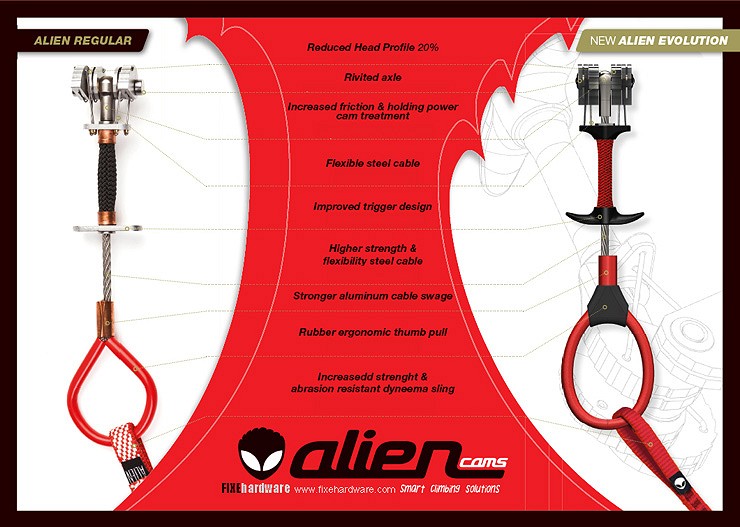
It has to be said that these Aliens are very similar to the above reviewed Totem Basic Cams. The main difference being that the Aliens have plastic triggers. The one bonus of the Alien LITES over the Totem Basics is the extendable sling. Those slight things aside, we're looking at two very similar products and they both work really well.
Extra note: For those wanting the original Alien design, Fixe are still making them - check out the Fixe Website. We preferred the Alien LITES.
Summary:
Awesome cams. True to the old design with a couple of tweaks. Very similar to the Totem Basics. Will go in and stay in for those marginal placements. Not quite as polished a product as something like the BD X4s but with softer lobes they may well grip where others won't. Only available in small sizes (up to around Purple Camalot/Dragon).
Check out the video from OutDoor 2015:
Strength: 5kn - 10kn depending on size.
Weight: 46g (smallest) - 61g (largest)
More info: Alpkit Website
Overall Summary
|
Model |
Price | Weight | Strength | Rating | Summary |
|
Black Diamond Camalots X4s |
£70 | 51g (smallest) | 5kn - 9kn | |
Best in Test winners for small cams. The larger sizes are dual axle which is great. Brilliant, tough, narrow-headed small cams. We loved them. |
|
Totem - Basic Cams |
£58 |
56g (smallest) |
5kn - 11kn |
Excellent single axle micro cams with soft metal lobes that are dead grippy. A newer, fresher version of the old Aliens. |
|
|
Metolius Master Cam |
£55 |
62g (smallest) |
5kn - 10kn |
These sit between the X4s and Totem Basics, with a softer metal than the 7075 of the X4s and a stronger camming angle, but harder metal and not as grippy as the Totem Basics. |
|
|
Fixe Alien LITE |
£50 |
75g (smallest) |
02:45 |
Awesome cams. True to the old design with a couple of tweaks. Very similar to the Totem Basics. Not quite as polished as the BD X4s but softer lobes may well grip where others won't. |


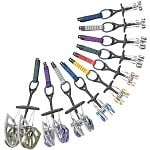
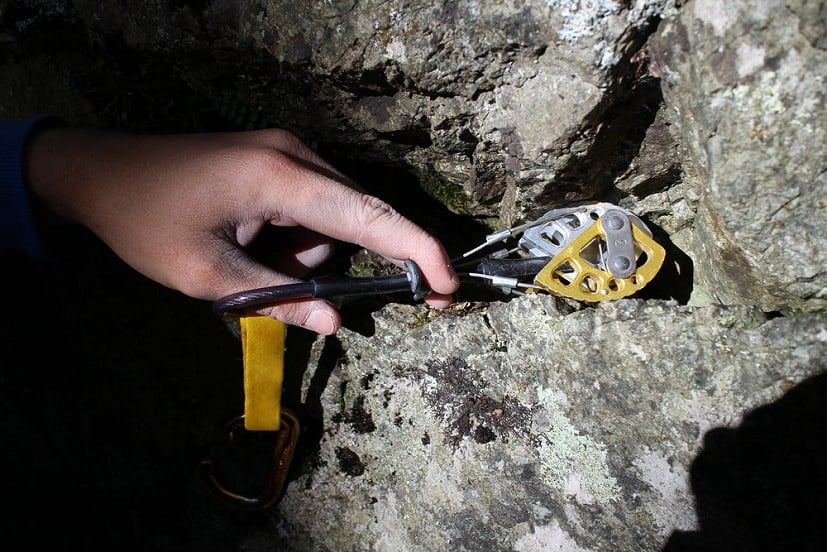

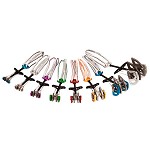
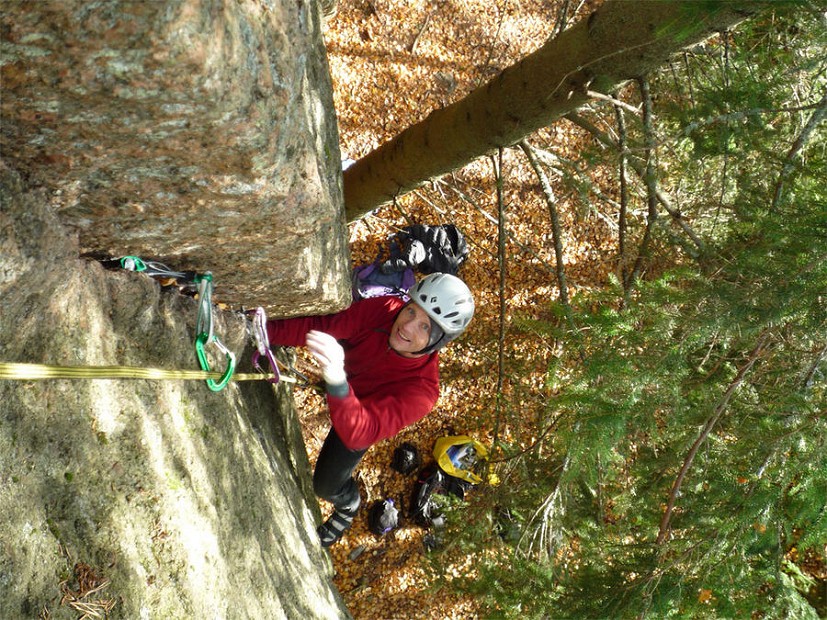

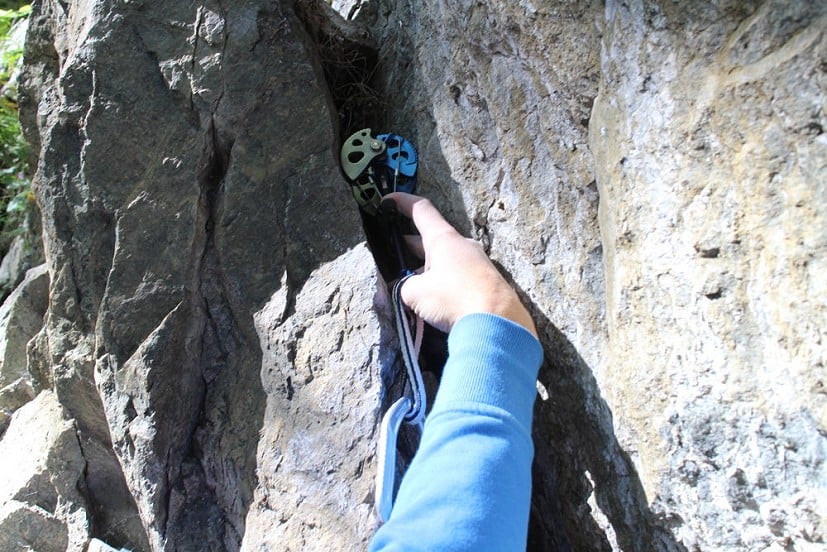

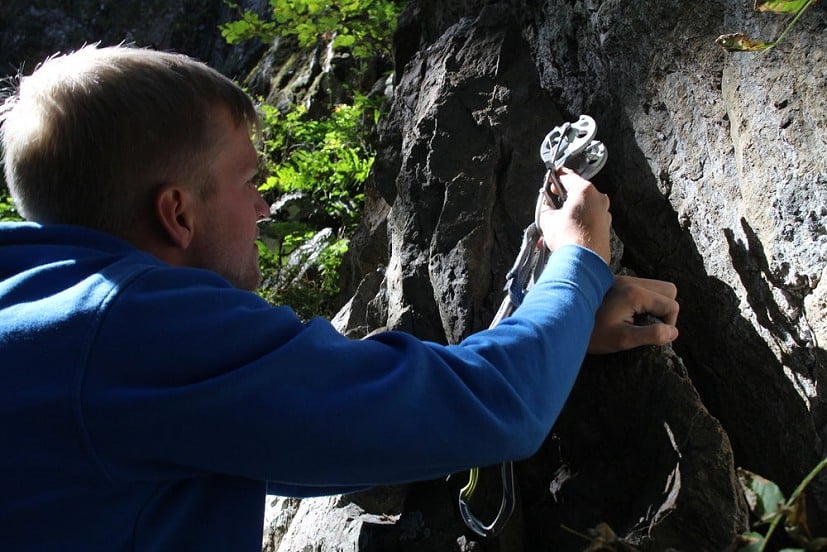



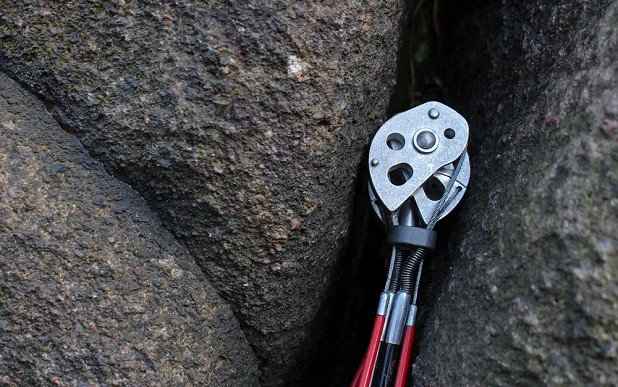
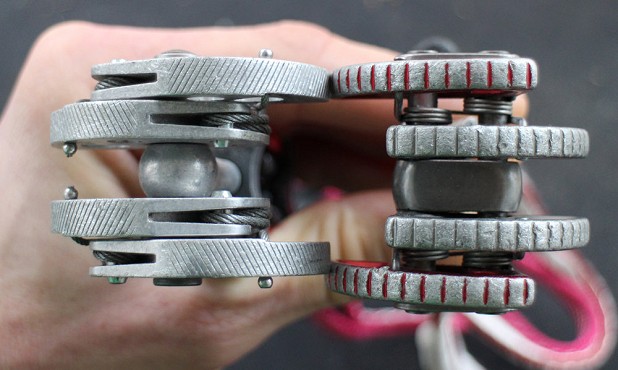







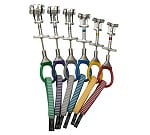
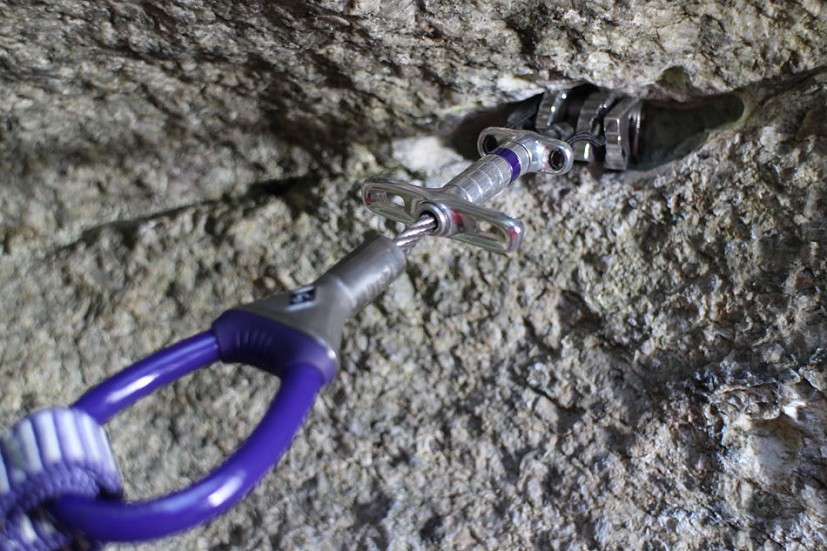
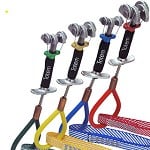
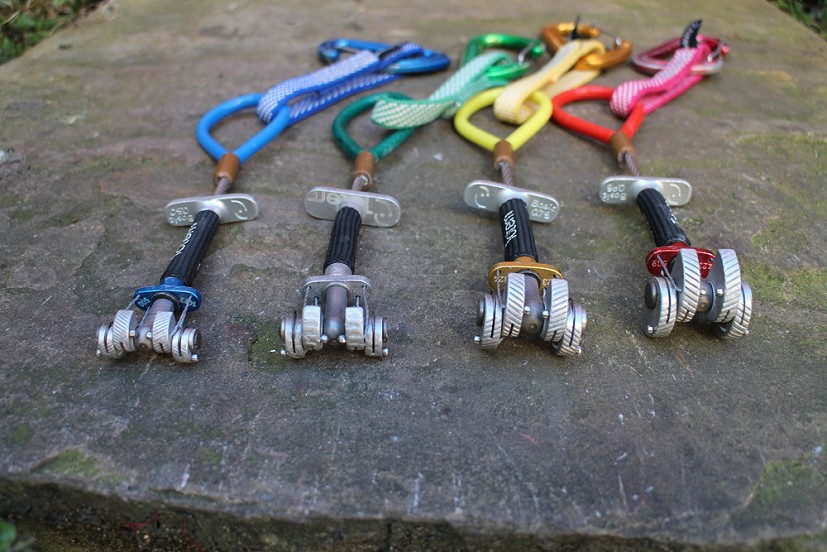

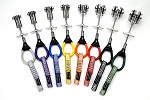
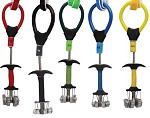
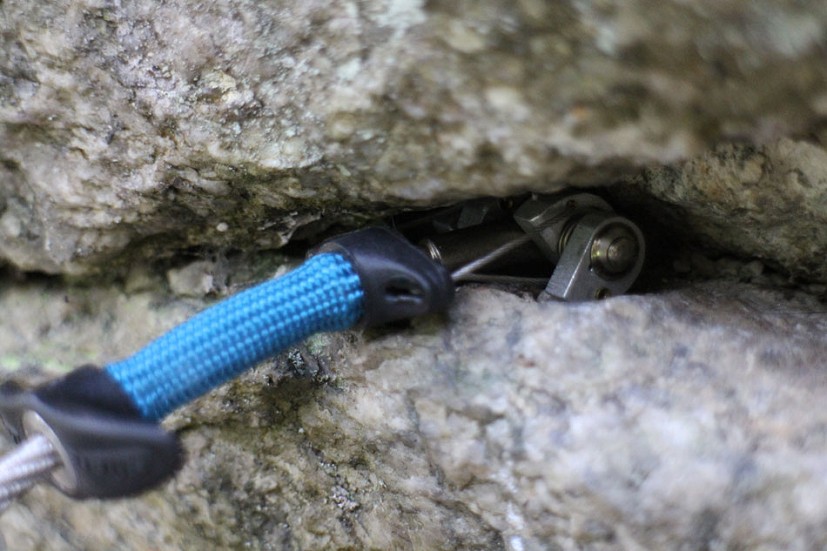




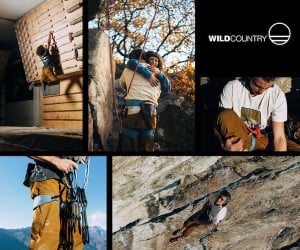
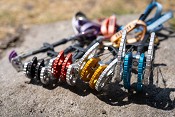
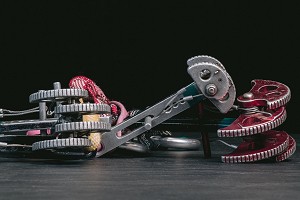

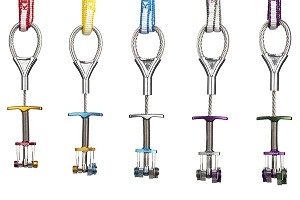
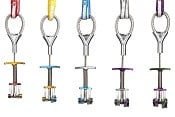
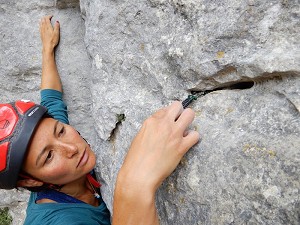
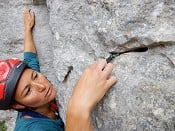
Comments